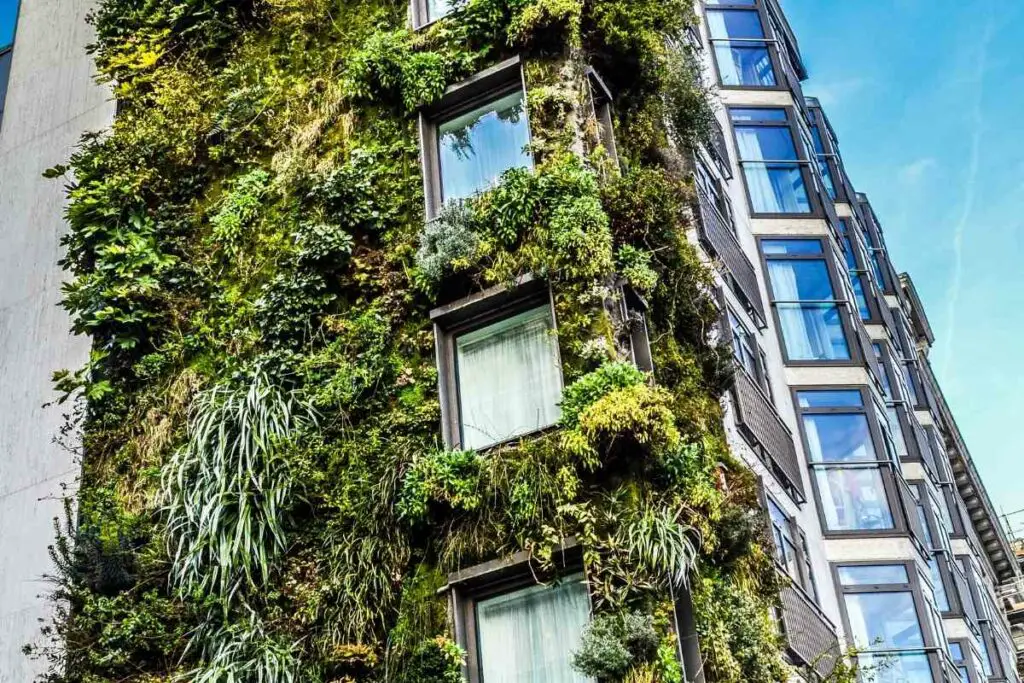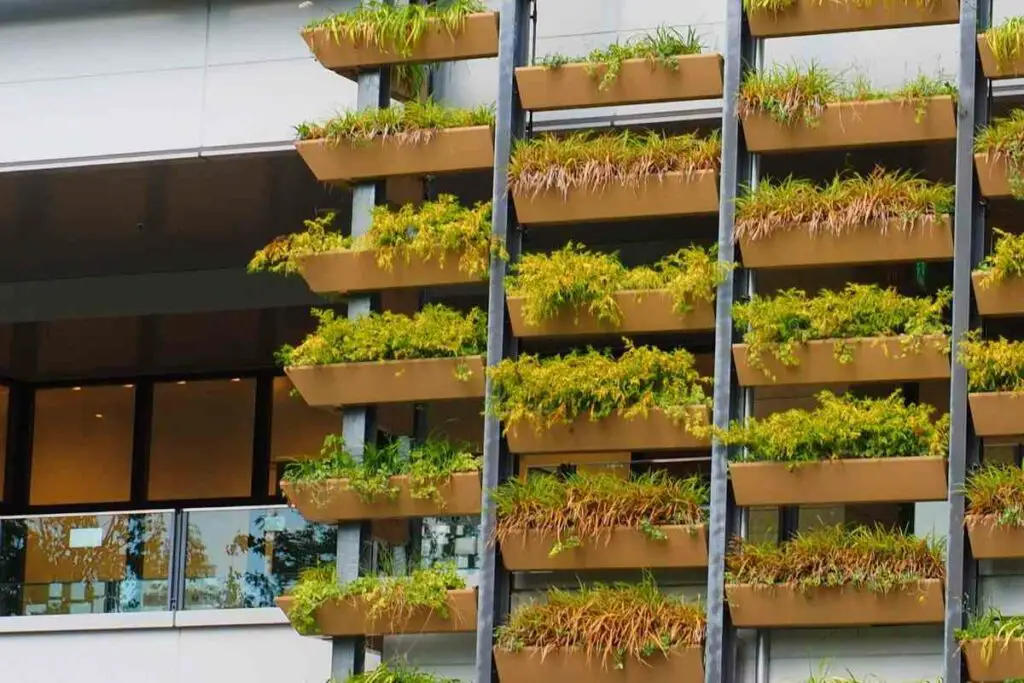Vertical gardens can potentially damage the walls they’re growing on. Moisture and parts of the plants have ways of seeping through walls and making cracks that result in a costly mess for you. You can solve this problem by taking good care of the plants, as well as using an isolation method between the garden and the wall.
Do you have a vertical garden and wondering how you can prevent damaging your home? This article explains how you can do so.
Table of Contents
Does Anchor Vertical Gardens Damage Walls?
As your plants grow, the garden gets heavier. When you’re setting up your vertical garden, you must anchor it in the right place. You need to find the studs in the wall and anchor the garden into the studs. This ensures there’s enough support for the weight of the vertical garden.
Anchoring in a spot that’s not strong enough to support the garden structure and plants results in the garden ripping out of the wall causing plenty of damage.

Does Water from vertical Gardens Damage Walls?
Your garden may also cause water damage to the wall behind it. You’ll need to water your plants like you would for any other type of garden. The best way to protect your wall from moisture is to use a barrier material between the garden and the wall.
The other piece of this is to hang the garden structure in such a way that it creates an air space between the plants and the wall. That allows for the moisture to dry accordingly, rather than sitting and getting absorbed into the wall material.
Also, make sure to keep plants trimmed and well-maintained. Overgrown plants can scratch, crack, poke holes in, and tear wall materials. Caring for the plants appropriately keeps them from directly damaging your walls
What Materials Can I Use to Create a Barrier?
One of the most practical and commonly used barrier materials is plywood. It’s a relatively cheap option and can be cut to the exact size you need.
Plywood is also water-resistant. It offers protection from moisture. It’s thick enough to keep the plants themselves from damaging your walls, as well.
Plywood looks great painted, too. You can add any color you want behind your vertical garden.
Other kinds of boards people use include green boards and cement boards. Though either of these will protect your wall, they both have their downsides. Green boards don’t offer the level of protection plywood does. Cement boards are heavy.
Purchase a Fabric Pouch System
Fabric pouch systems are essentially kits. There’s a wood frame with a self-contained pouch system that sits out from the wall. The protection comes in the form of an air gap between the vertical garden and the wall.
Would My Vertical Garden Importance from Air Gaps?
You’ll do yourself a favor by leaving a decent air gap between the garden and the wall. Moisture causes mold and mildew when it’s trapped and unable to dry out.
You can easily create an air gap by building a frame for your vertical garden or using spacers. Spacers can be made of any material but should be the same width so the garden stays even.

Do I Need to Have a Barrier?
Not all vertical gardens should need a barrier. If yours is small, you won’t deal with the same issues we’re talking about here. Small vertical gardens are much easier to care for and maintain. For instance, you may have a small vertical strawberry garden inside or outside. It doesn’t require the same kind of attention to detail, as it doesn’t pose the same threat to your wall.
The vertical gardens we’re mostly referring to in this article cover entire walls. They are essentially living walls.
Vertical gardens outside against brick walls may not need the barrier either. Brick and other exterior wall materials don’t take damage the same way interior walls do.
What Plants Do the Best in Vertical Gardens?
Some specific plant types do well in vertical gardens. Living walls have been around since ancient times.
Ferns are robust plants that provide good coverage on a wall quickly. They also tend to grow in a downward direction, making them good choices for vertical gardens.
Other plants you can easily use for a living wall include bromeliads, succulents, and vines.
Final Thoughts
Vertical gardens can be beautiful and have been around since ancient times but can they damage your home?
Vertical gardens can damage the walls of your home from excess water and moisture, anchoring the garden in the wrong area of the walls and overgrown plants getting into cracks. But these can all be prevented. Read the article above to find out how.













